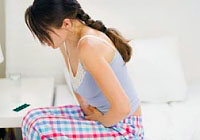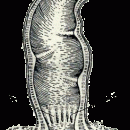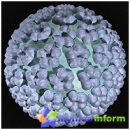The best ways of treating cystitis in women, according to urologists and gynecologists. Symptoms and causes of inflammation of the female bladder and features of chronic and acute cystitis.
Content
 Cystitis — inflammation of the bladder, the disease that is more common in women than in men. This distribution feature is associated with the presence of a short and wide urethra in women who contribute to the rapid penetration of infection in the bladder. Cystitis — The disease is an unpleasant, but relatively safe, with the exception of hemorrhagic cystitis (sucrovic in the urine) and reflux (inverse movement of urine from the bladder in the urinary ducts towards the kidneys). Reflux can provoke the development of pyelonephritis (inflammation of kidney pelvis).
Cystitis — inflammation of the bladder, the disease that is more common in women than in men. This distribution feature is associated with the presence of a short and wide urethra in women who contribute to the rapid penetration of infection in the bladder. Cystitis — The disease is an unpleasant, but relatively safe, with the exception of hemorrhagic cystitis (sucrovic in the urine) and reflux (inverse movement of urine from the bladder in the urinary ducts towards the kidneys). Reflux can provoke the development of pyelonephritis (inflammation of kidney pelvis).
Cystitis can occur in chronic and sharp form. If you do not treat acute cystitis or treat it wrong, then it will go into a chronic inflammatory process. For chronic shapes, periodic exacerbations are characterized by remission. With a timely handling of a specialist (gynecologist or urologist), the inflamed mucous membrane is restored after a few days. In addition to chronic and sharp, distinguishes bacterial and non-bacterial, infectious and non-infectious cystitis.
Causes and symptoms of bladder inflammation in women
Female cystitis can develop at different ages. The emergence of the inflammatory process in the bladder mucosa contributes to the following factors:
- supercooling (mainly the pelvis area, when sitting on a cold, for example);
- sedentary work;
- constipation;
- acute and peregrin;
- unrealized diseases of the urogenital system and chronic inflammatory processes;
- non-compliance with personal hygiene rules;
- Close clothes;
- Abstinence from urination;
- Physical exertion on the back and injury.
Recognize cystitis is not very difficult: it always begins with an acute form, expressed in frequent and painful urination. Pains are mostly marked in the pubic area. Urine can become muddy and contain succinous discharge. In exacerbations, there is an increase in temperature, nausea and vomiting.
Diagnosis and therapy of cystitis in women
 To diagnose and treat the inflammation of the bladder, you need to seek advice with a gynecologist or urologist. Custitis is diagnosed using the results of general blood and urine tests and cystoscopy. Treatment depends on the type and features of the course of the disease. Experts are usually prescribed antibiotics, physiotherapeutic procedures and bedding with abundant drinking and proper nutrition. When cystitis in pregnant women, antibiotics replace the urinary bubble instillations. The aircraft of cystitis is dangerous for further health. To eliminate the symptoms and do not let the inflammation in a chronic form, it is recommended to turn to the urologist. For prevention, lacto and bifidobacteria are well suited: they have a beneficial effect on the prevention of the urinary tract infection.
To diagnose and treat the inflammation of the bladder, you need to seek advice with a gynecologist or urologist. Custitis is diagnosed using the results of general blood and urine tests and cystoscopy. Treatment depends on the type and features of the course of the disease. Experts are usually prescribed antibiotics, physiotherapeutic procedures and bedding with abundant drinking and proper nutrition. When cystitis in pregnant women, antibiotics replace the urinary bubble instillations. The aircraft of cystitis is dangerous for further health. To eliminate the symptoms and do not let the inflammation in a chronic form, it is recommended to turn to the urologist. For prevention, lacto and bifidobacteria are well suited: they have a beneficial effect on the prevention of the urinary tract infection.
There is a surgical method of treating cystitis. This method of therapy is relevant in the presence of a disease that cannot be liquidated by medicines, but promotes the development of cystitis. Examples of similar pathologies are the stones of the bladder, urethral strictures (narrowing) and tumors. As a surgical intervention, dilatation (expansion) of the urethra.
If you contact folk medicine, cranberry juice, parsley, dill, needles and birch baths can help in the treatment of cystitis. Cranberry juice helps to prevent the re-appearance of cystitis, on a par with a parsley and dill. The beneficial effects are provided by baths with cheese fir or pine, with birch leaves and sage. Remember that only a urologist (gynecologist) can be appointed the main and correct treatment.









